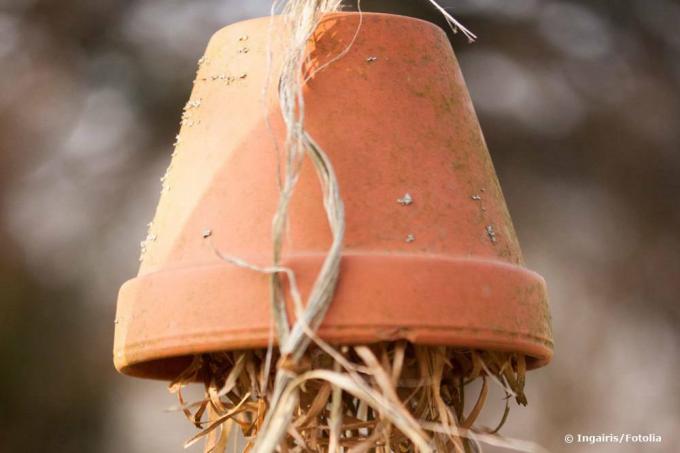
table of contents
- "Relocate" through fragrances
- The flower pot method
- Step 1 - the preparation
- Step 2 - Set up the "trap"
- Step 3 - The move
- Step 4 - pick up and transport
- Step 5 - Moving into the new home
- frequently asked Questions
Ants are not welcome everywhere. Therefore, here you will find out which measures you can use to move an anthill gently.
In a nutshell
- If you relocate ants using scents, the new location of the nest can hardly be influenced
- With the flower pot trick, an anthill can be relocated to a new location
- with the garden ants typical in the home environment, the new habitat can be in the same garden
"Relocate" through fragrances
Again and again, reference is made to the use of fragrances when trying to relocate an anthill. Even with the use of fragrances that are harmless for nature conservation, there is a catch:
Fragrances are generally used that ants do not like. These are for example:

- vinegar
- lemon
- Tea tree oil
- Cinnamon or cinnamon oil
- Herbs with a high proportion of essential oils such as marjoram, thyme etc.
If these substances are used, the ants leave their nest and look for a new place to stay. It is not in your hands exactly where that will be. In the worst case, the new nest will then be created in a place where it is just as undesirable, so that in the end you have gained nothing.
Tip: Therefore only use the scent method if you explicitly want to keep the animals away from a place. Herbal pots can, for example, form an effective barrier in front of windows or patio doors.
The flower pot method
If, on the other hand, you want to move an anthill from one place to another, there is another option - the flower pot trick. For him, do the following:
Materials:
- 1 flower pot medium size made of clay, min. Inside unglazed
- Wood wool, fine straw or newspaper
- Bucket of water
- Sugar, jam, honey or a similar attractant
- Spade, wooden board or something similar
Step 1 - the preparation
As an introduction to relocating the ants, first prepare the "trap" in which you pick up the anthill for transport to the new place of residence:

- Immerse the flower pot completely in water for about an hour and let it soak
- Take the pot out of the water and let it drain well
- Coat the bottom of the pot thickly with the chosen attractant
- Stuff the container tightly with straw, wood wool or crumpled newspaper
Tip: Make sure to choose a flower pot without a hole in the bottom, or to close it. Otherwise, in addition to the ants themselves, you will also attract other insects from outside the nest.
Step 2 - Set up the "trap"
Once you have prepared your “trap”, place it directly over the anthill with the open top of the pot facing down. Make sure that you cover the entire visible area with entrances, so that all the swarming animals can find their way directly into the temporary housing.
Step 3 - The move
This relocation step is particularly easy. Because now all you have to do is wait until the ants have accepted their new temporary housing. The animals themselves like it very much in their nest. However, the stronger the attractive factors are, the easier it is for them to accept a new place to stay. In your transitional nest these are:
- High humidity
- High heat through insulating nesting material
- Optimal food supply through sugar bait
The waiting time until the colony is completely moved into the flower pot should be a few days to a maximum of a week. Then the animals also relocated their brood, so that the survival of the colony is ensured.
Step 4 - pick up and transport
Now it is time to transport the moved anthill to its new permanent location:

- Push a spade or a thin wooden board between the soil and the flower pot
- For longer transport routes: Put both together in a tight bucket or small barrel with a lid
- Carry out transport as uniformly as possible and without violent vibrations
Step 5 - Moving into the new home
Place the flower pot in the proposed new location of the ant colony and pull the spade away from under the opening. Extracting from the flower pot works particularly well if you loosen up the soil underneath in preparation and distribute some sugar or jam as a welcome gift.
frequently asked Questions
Normal garden ants can be relocated without any problems. It is important that the entire people and not just a few workers are moved. Otherwise the nest will be left behind or even destroyed. Forest ants, on the other hand, should only be found in forest areas. Should they ever need to be relocated, you should contact the responsible district forester.
No. An ant colony has innumerable individuals, of which animals permanently die and grow. Just make sure to move the brood as undamaged as possible.
Make the soil underneath even more attractive by providing loose, moist soil and enough food. After a while, the conditions in the flower pot become unattractive and the animals look for a new place to stay on their own.

